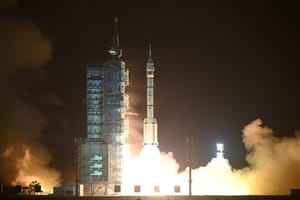
Apr 25, 2024
Shenzhou-18 taikonauts board China's space station!
China has launched its seventh crewed mission to its Tiangong Space Station on the 25th of April at 20:59 pm China Standard Time, or 12:59 pm Universal Coordinated Time. The crew, Ye Guangfu, Li Cong, and Li Guangsu, are expected to stay aboard the station for six months. They will also take over from the outgoing Shenzhou-17 crew, after five days of sharing the station with them.
The mission launched from Launch Area 4 (SLS-1/921) of the Jiuquan Satellite Launch Center, located in the north of China, atop of a Long March 2F/G rocket. According to Chinese media, the Shenzhou-18 launch mission was a complete success, with the crew beginning plans to rendevous with the Tiangong Space Station shortly after.
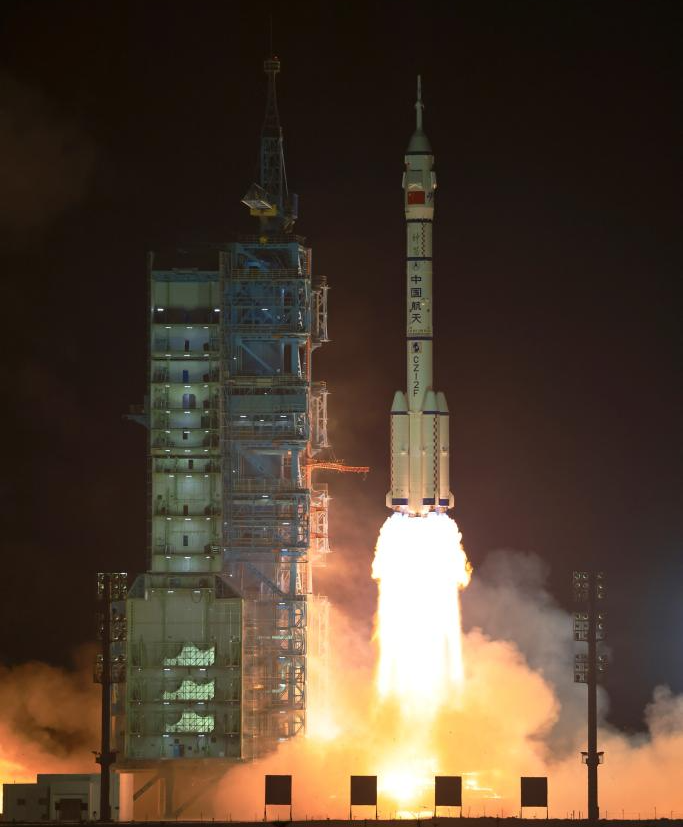
Once the Shenzhou-18 spacecraft was in low Earth orbit, the spacecraft performed a 'fast rendevous' with the Tiangong Space Station. The rendevous led to the docking occurring a little over six and a half hours after launch.
The spacecraft carrying the three taikonauts docked at the nadir port of the Tianhe module, with them entering the module at 05:04 am China Standard Time, or 21:04 pm Universal Coordinated Time, and being greeted by the Shenzhou-17 crew.
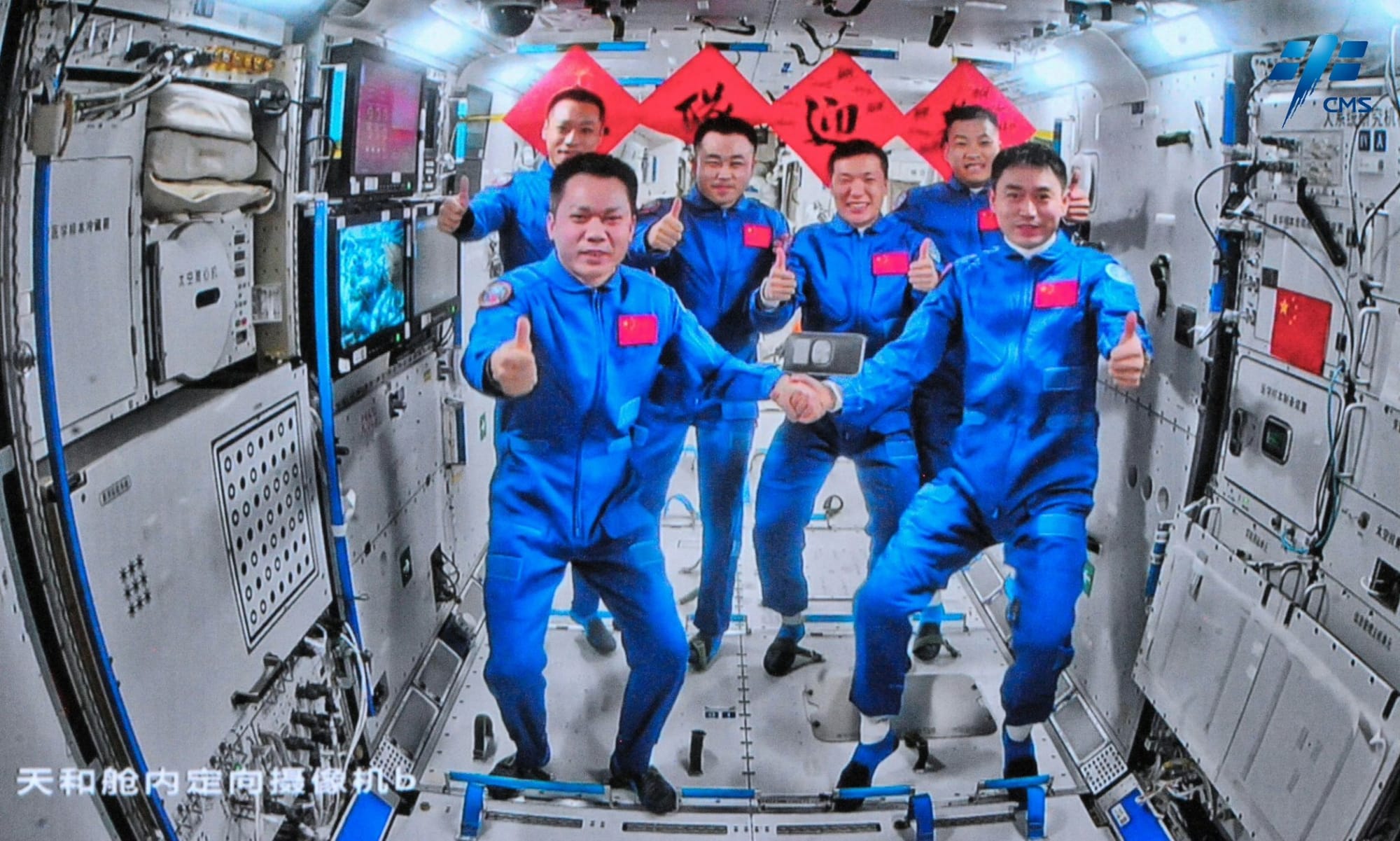
With the Shenzhou-18 crew now onboard and adjusting to the microgravity environment, the Shenzhou-17 crew will prepare for their return to Earth. According to the China Manned Space Agency, the Shenzhou-17 crew will touch down at the Dongfeng landing site in the north of China on the 30th of April.
Meet the Shenzhou-18 crew
The commander of the Shenzhou-18 mission is Ye Guangfu (叶光富), making his second trip to space and to the space station. Ye Guangfu's first flight was for the six-month Shenzhou-13 mission which began in October of 2021.
Ye is from Chengdu, in the Sichuan province, has previously served in the People's Liberation Army from 1998 as a fighter pilot. He was selected as part of the second group of taikonauts in May of 2010.
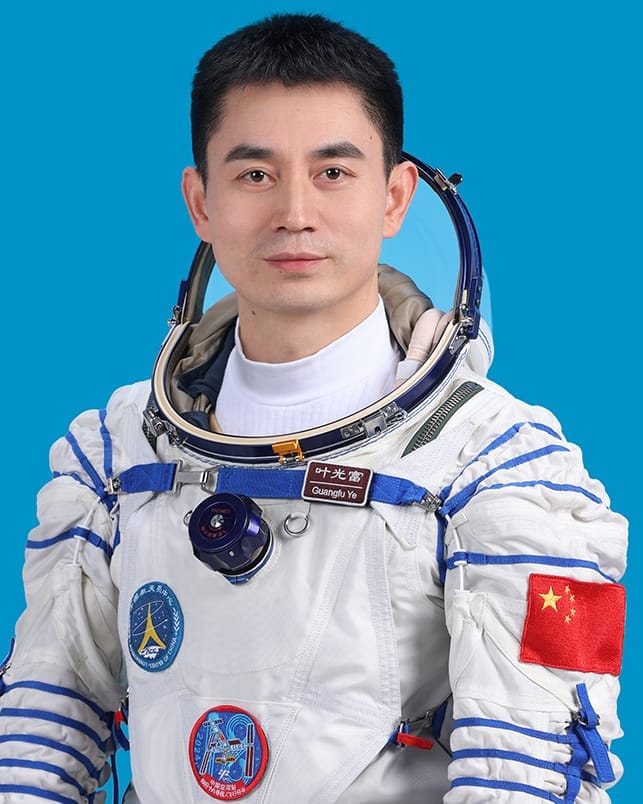
The operator of the Shenzhou-18 mission is Li Cong (李聪), who is making his first trip to space of his taikonaut career.
Li is from Handan, in the Hebei province, and has previously served as a deputy group commander and was a second-grade pilot in the People's Liberation Army Airforce. He was selected as a taikonaut in September of 2020 as part of the third group.
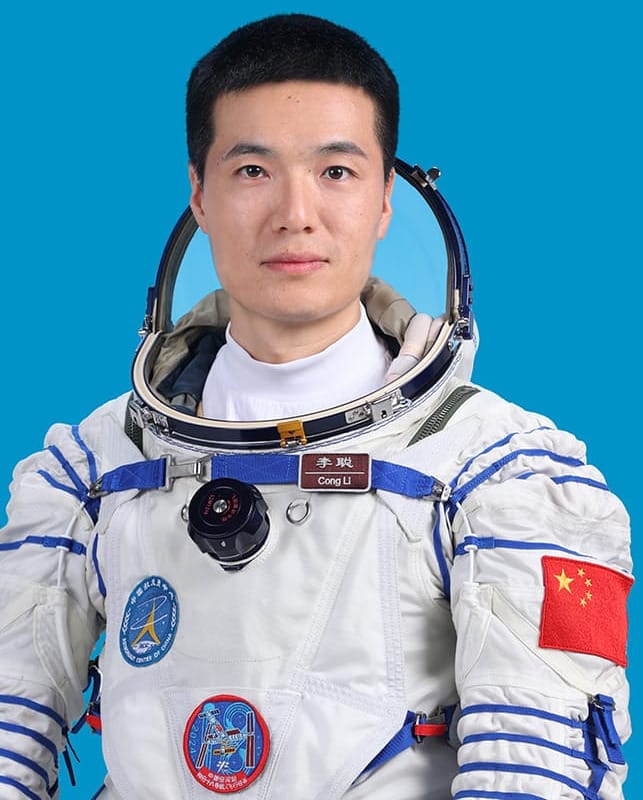
The system operator of the Shenzhou-18 mission is Li Guangsu (李广苏), who is also making his first trip to space of his taikonaut career.
Li is from Peixian county, in the Jiangsu province, and has previously served as a deputy group commander and was a first-grade pilot in the People's Liberation Army Airforce, which he joined in 2006. He was also selected as a taikonaut in September of 2020 as part of the third group.
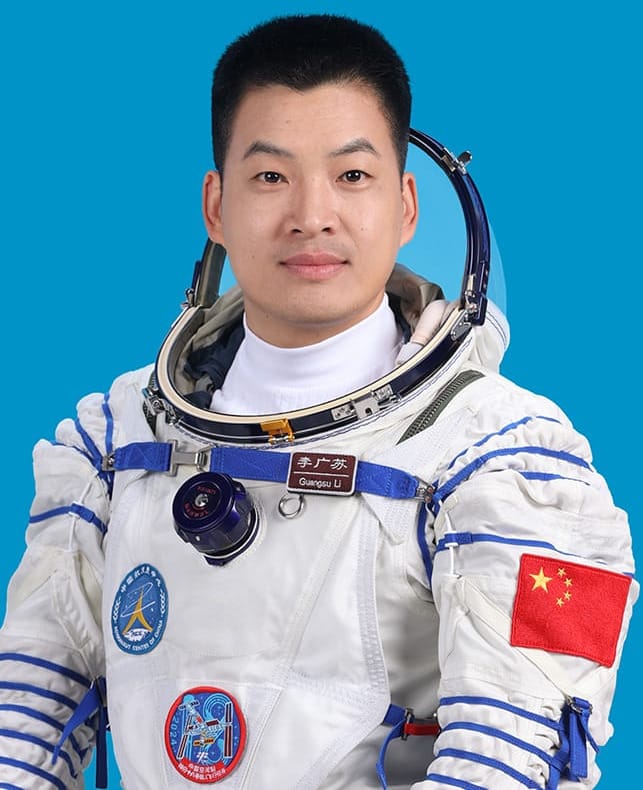
What will the crew do during their stay?
According to the China Manned Space Agency, the crew is expected to carry out experiments onboard the space station, conduct extravehicular activities, and engage in public outreach events. They will also be onboard the station when the Tianzhou-8 cargo spacecraft arrives carrying new supplies and consumables.
The experiments the crews will assist in are reported to be in the fields of basic physics in microgravity, space material science, space life science, space medicine, and space technology according to Lin Xiqiang, Deputy Director of the China Manned Space Agency.
During their six-month stay onboard the station, the crew may perform up to three extravehicular activities to install space debris impact mitigation hardware on the exterior of the station. They may also venture outside to conduct repairs when needed, the Shenzhou-17 crew did this after a micrometeorite severed a power connection.
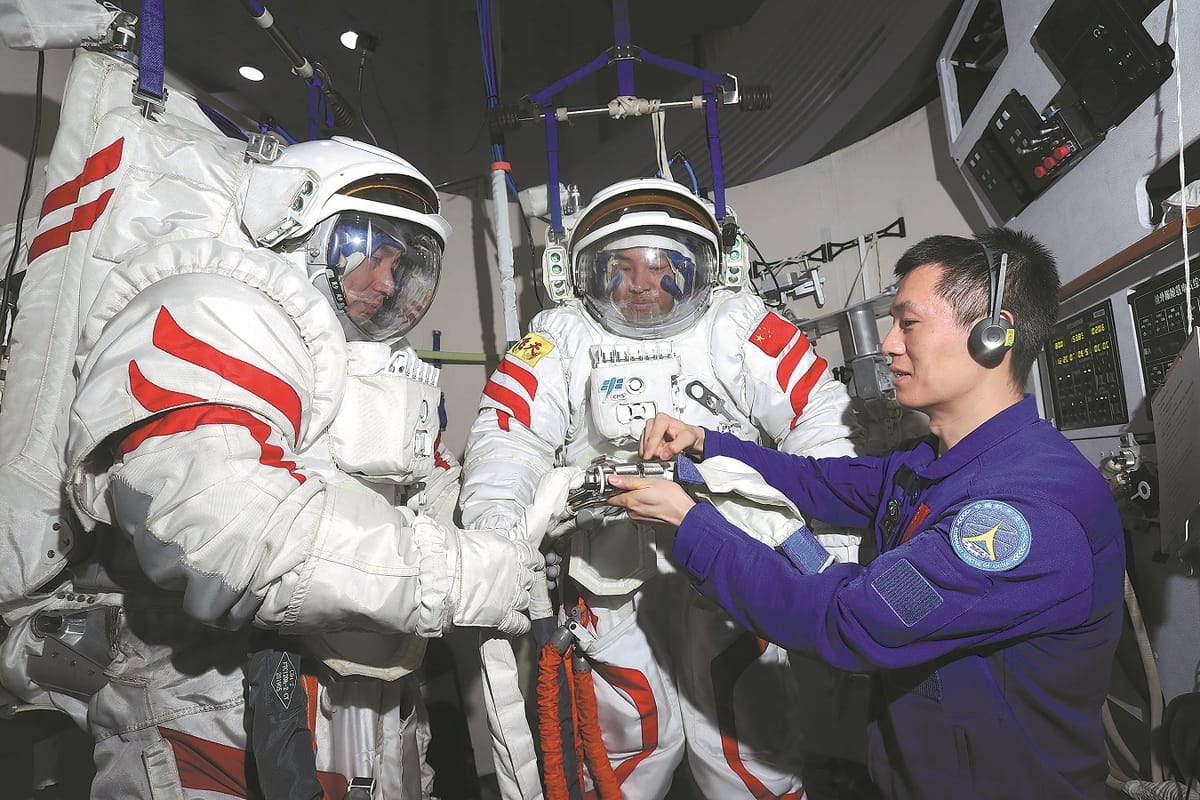
While onboard the astronauts will also assist in the research using a small aquarium 1.25-liter aquarium that would house four small fish, which are believed to be zebrafish. The study of the fish in-space is hoping to develop a breakthrough in breeding vertebrates in the microgravity environment. If the study is successful the China Manned Space Agency hopes that taikonauts will be able to keep some fish long-term in the future to use as a fresh food source, crews already grow some plants onboard as food to vary their diet.
The first task of the Shenzhou-18 crew however is to take over from the Shenzhou-17 crew, this will be signified when both crews conduct a handover ceremony. The crew will be in charge of space station maintenance, operations, and experiments after the handover ceremony, prior to this the crew will be adjusting to the microgravity environment.
What is the Shenzhou spacecraft?
The Shenzhou spacecraft is China’s only operational crewed spacecraft and is currently used to ferry its crews to and from the Tiangong space station. The spacecraft has a pressurized volume of almost fifteen cubic meters with a habitable volume of seven cubic meters. Currently, the Shenzhou spacecraft has a crew capacity of three.
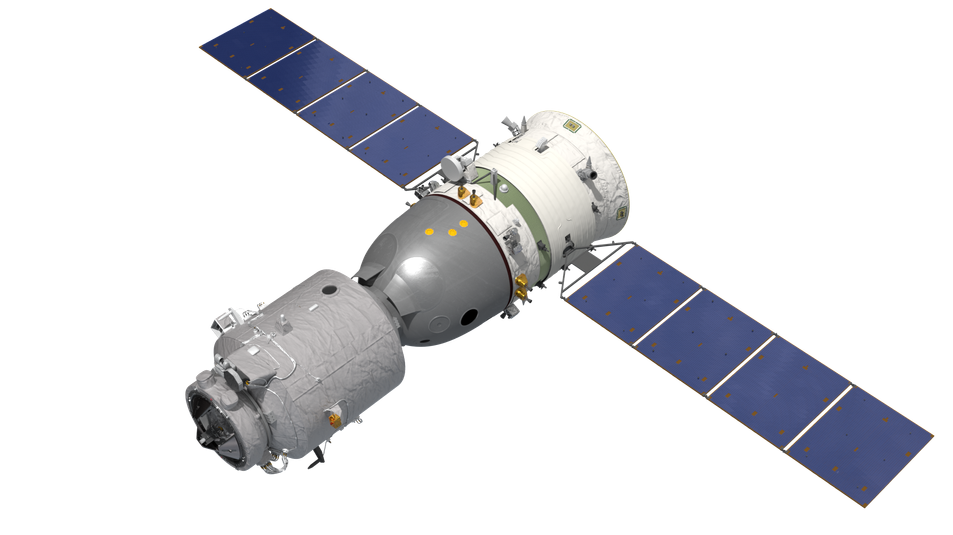
Shenzhou consists of a service module, a re-entry module, and an orbital module. The only part of the spacecraft that the crew cannot access is the service module, which also houses the four main engines for performing in-space maneuvers. For generating power, the Shenzhou spacecraft has two solar wings with four panels each that are unfolded after launch, a rotating fixture also attaches them to the service module.
During launch and return to Earth, the crew is seated in the re-entry module. The re-entry module is the only part of the spacecraft that can survive the heat of re-entry and has parachute systems and a landing motor to safely land after return from space. Inside the module, the crew can take control of the spacecraft, access some of the cargo stored during launch and landing, and look out the windows from their seats.
The Shenzhou spacecraft also has an orbital module to allow the crew to have extra room during free flight to and from the Tiangong Space Station, it also has the docking system on the front. The docking system of the spacecraft is based on the Androgynous Peripheral Attach System and is 800 millimeters in diameter.
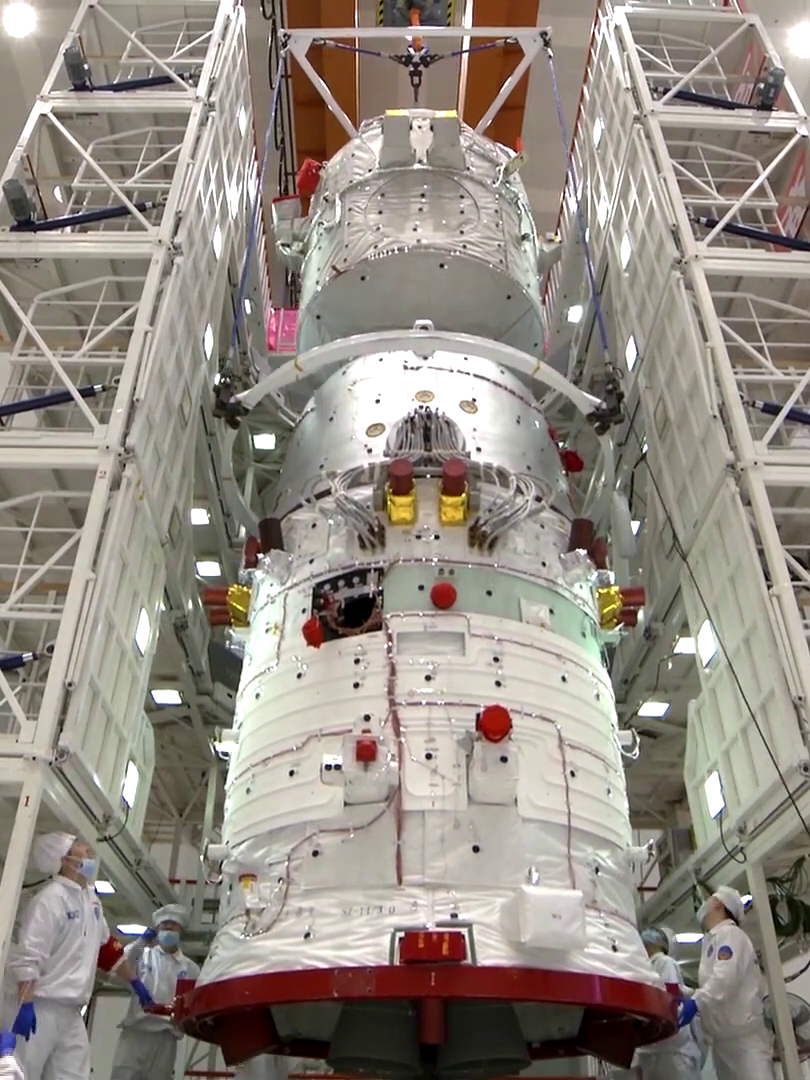
The Shenzhou spacecraft currently launches on the Long March 2F/G rocket from the Jiuquan Satellite Launch Center, at which it has an exclusive launch pad called SLS-1/921. Each Shenzhou spacecraft has a believed launch weight of 8,100 kilograms and an in-space mass of 7,840 kilograms.
Shenzhou refers to both China's crewed space missions and the Shenzhou spacecraft. To date eighteen Shenzhou missions have been launched, with the latest being the thirteenth crewed one.
What is the Long March 2F/G?
The Long March 2F/G is a two-stage rocket burning Dinitrogen Tetroxide and Unsymmetrical Dimethylhydrazine in both of its stages and boosters. So far the Long March 2F/G has been launched twenty-two times, this also included launches of the Long March 2F/T, with no failures since entering service in November of 1999. It has currently been exclusively launched from the Jiuquan Satellite Launch Center.
The launch vehicle is specifically designed for low Earth orbit launches and has a payload capacity of 8,400 kilograms to low Earth orbit.
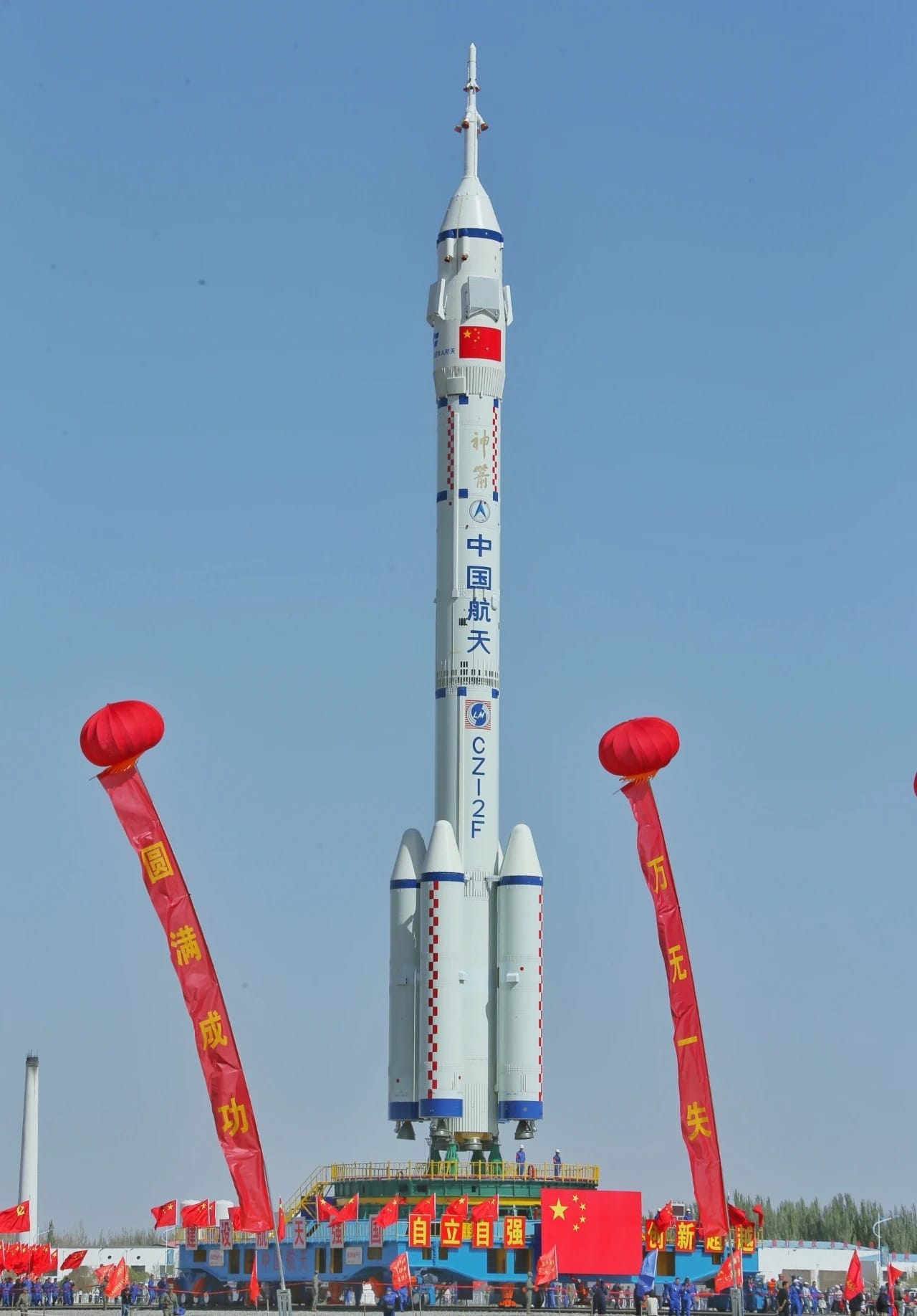
Powering the first-stage are four YF-20B generating a combined 332 tons of thrust burning Dinitrogen Tetroxide and Unsymmetrical Dimethylhydrazine for two minutes and forty-six seconds. The first-stage is also augmented by four booster, each powered by one YF-20B each generating 83 tons of thrust each burning Dinitrogen Tetroxide and Unsymmetrical Dimethylhydrazine for two minutes and eight seconds. The combined thrust of the first-stage and four boosters is 664 tons of thrust.
The second-stage of the launch vehicle is powered by one YF-24B generating 85 tons of thrust burning Dinitrogen Tetroxide and Unsymmetrical Dimethylhydrazine for five minutes, which completes the ascent to orbit.
On its launch pad, the Long March 2F/G is 62 meters tall with a diameter of 3.35 meters for the first and second stages, the boosters have a diameter of 2.3 meters. Fully fuelled the launch vehicle weighs 464,000 kilograms.
What is the Tiangong Space Station?
The Tiangong Space Station, also called the Chinese Space Station, is a permanently crewed space station in low Earth orbit operated by the China Manned Space Agency and China National Space Administration. The space station consists of the Tianhe core module, the Wentian laboratory module, and the Mengtian laboratory module. The station has three docking ports for visiting spacecraft to dock located on the Tianhe module, one port is located at the aft end of the module, and two and the forward end with one facing Earth. The combined habitable volume of the space station is believed to be 122 cubic meters, with a total pressurized volume of 340 cubic meters.
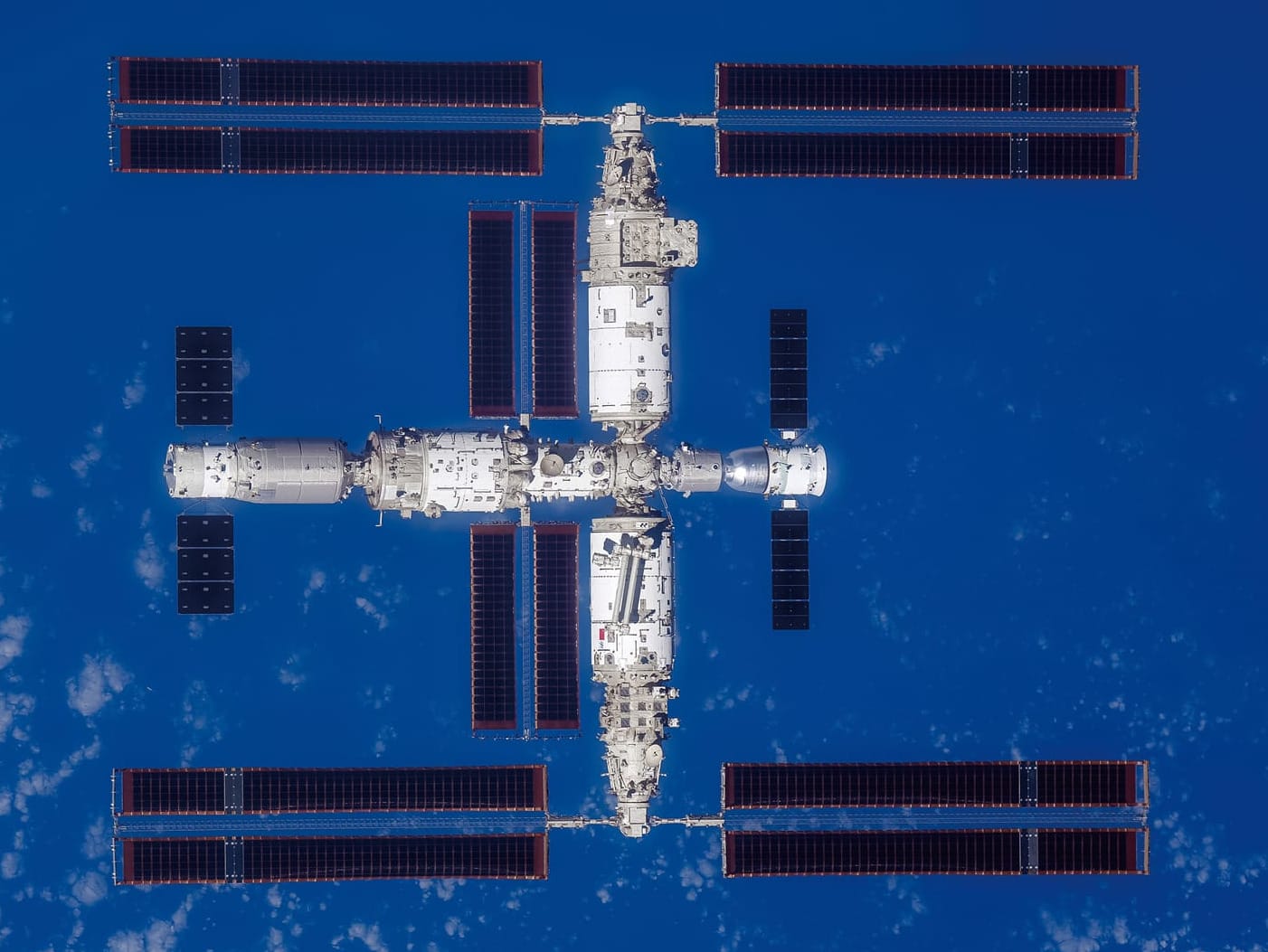
Each of the three modules were launched by the Long March 5B, with Tianhe launching on the 29th of April 2021, followed by Wentian on the 24th of July 2022, with the latest edition being Mengtian on the 31st of October 2022. China currently plans to launch the Xuntian space telescope which will co-orbit with the space station for periodic docking for servicing and maintenance by crews onboard.
For more about the space station and its future see here.
What are taikonauts?
The word taikonaut has been used in this article so a small explanation of the word is necessary for those unfamiliar with it. Taikonaut is what China calls its astronauts, such as the country's first taikonaut Yang Liwei who flew into space in 2003.
The word comes from a combination of the Chinese word for outer space, taikong, and the suffix, naut.



